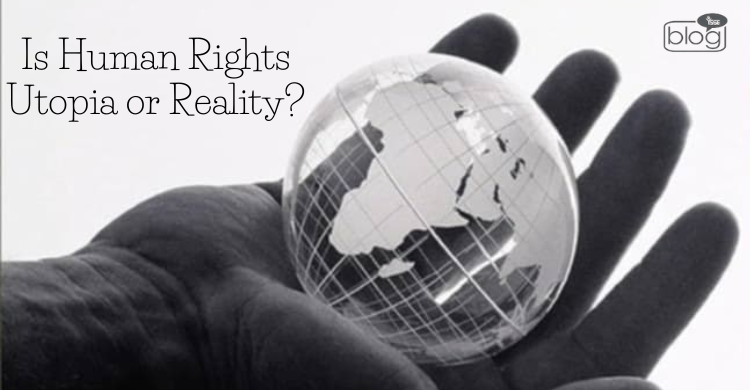Human rights are the basic rights and freedoms of all people regardless of race, religion, caste, gender, culture, social position, which includes the right to life, freedom of speech, education, equal rights under law.
But human rights in today’s world is just a utopia or reality? Or is there real reflection here? Decade after decade many such questions are raised. The answer lies in how human rights are embodied, used, abused and preserved.
Human rights refers to the moral entities that permit or prohibit a certain behavior with human beings and are upheld legally domestically and internationally. These rights are called legal and natural rights and are present with every human being without distinction of race, colour, nationality, or other attributes. Human rights were recognized on a large scale after the Second World War and especially after the holocaust. In 1948 the United Nations General Assembly adopted the Universal Declaration of Human Rights (UDHR) after years of atrocities in World War II.This document defines a list of liberties that any country is expected to defend in order to establish a universal human rights’ standard. This document outlined a comprehensive framework of rights that countries are encouraged to protect, setting a global standard for human dignity, freedom, and justice.
According to law professor Samuel Moyn, The Last Utopia: Human Rights in History problematizes the status of human rights as historical, asserting that they were invented after the failure of previous forms of politics such as nationalism, socialism. Moyn emphasizes that human rights were once conceived as a utopian project, a framework for solving global issues with injustice by using moral claims of justice that are valid for the entire world . Although democracy most often parallels human rights and also structures and politics prevent the raw concepts from coming into reality especially in the developing world.
The gap between utopia and reality is exacerbated in regions with systemic inequality, authoritarian regimes, or conflict. The UDHR guarantees freedoms, but many face unattainable rights. Global crises like climate change, mass migration, and digital surveillance require new interpretations of rights frameworks.
To balance between the noble slogans of human rights and their implementation, people use such an approach called pragmatic. This means not taking a narrow view that catering to these frameworks is the solution, yet striving for this progress at the same time. For instance, grassroots movements have contributed significantly to the push for equal rights for people of color and the gay community showing that people on the ground can create change across the world. Mapping is a powerful tool that can broaden the understanding of grassroots movements being used to bring shifts in today’s world.
However, a culturally sensitive and a structural approach to human rights could help fill the gap between rhetoric and reality. This will need to change from the current Anglo American bias to a model that really incorporates the range of human experience.
Human rights exist in between a utopia and a reality. At the same time, they are seen as something that should and will become our reality while being used as a weapon against injustice. But to do that is a constant struggle, especially in relation to the underlying causes and the needs of today’s world. As history shows the fight for people’s rights is a never-ending process now this page is the proof of human hope. And whether this social journey leads to utopia or a more realistically achievable goal is now up to all of us.
To read more blogs, click Here
Writer,
Most. Sirajum Munira
Intern, Content Writing Department
YSSE

